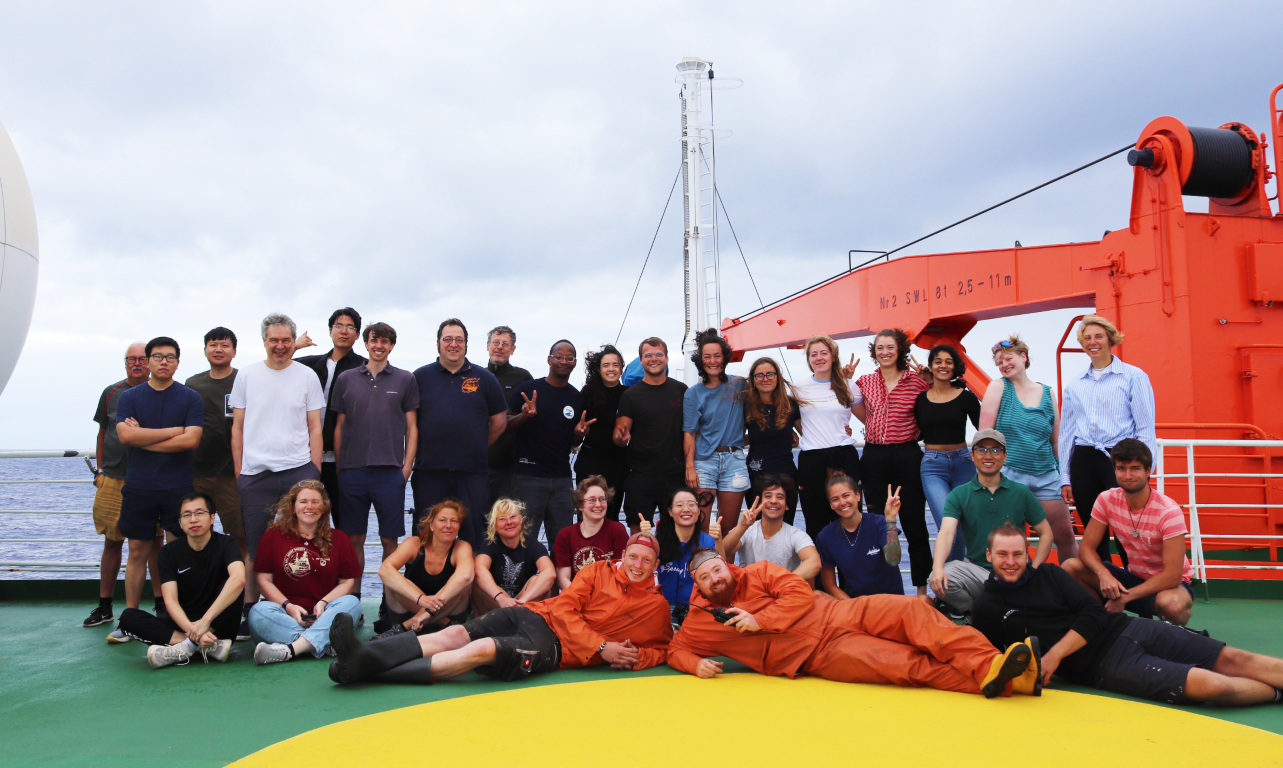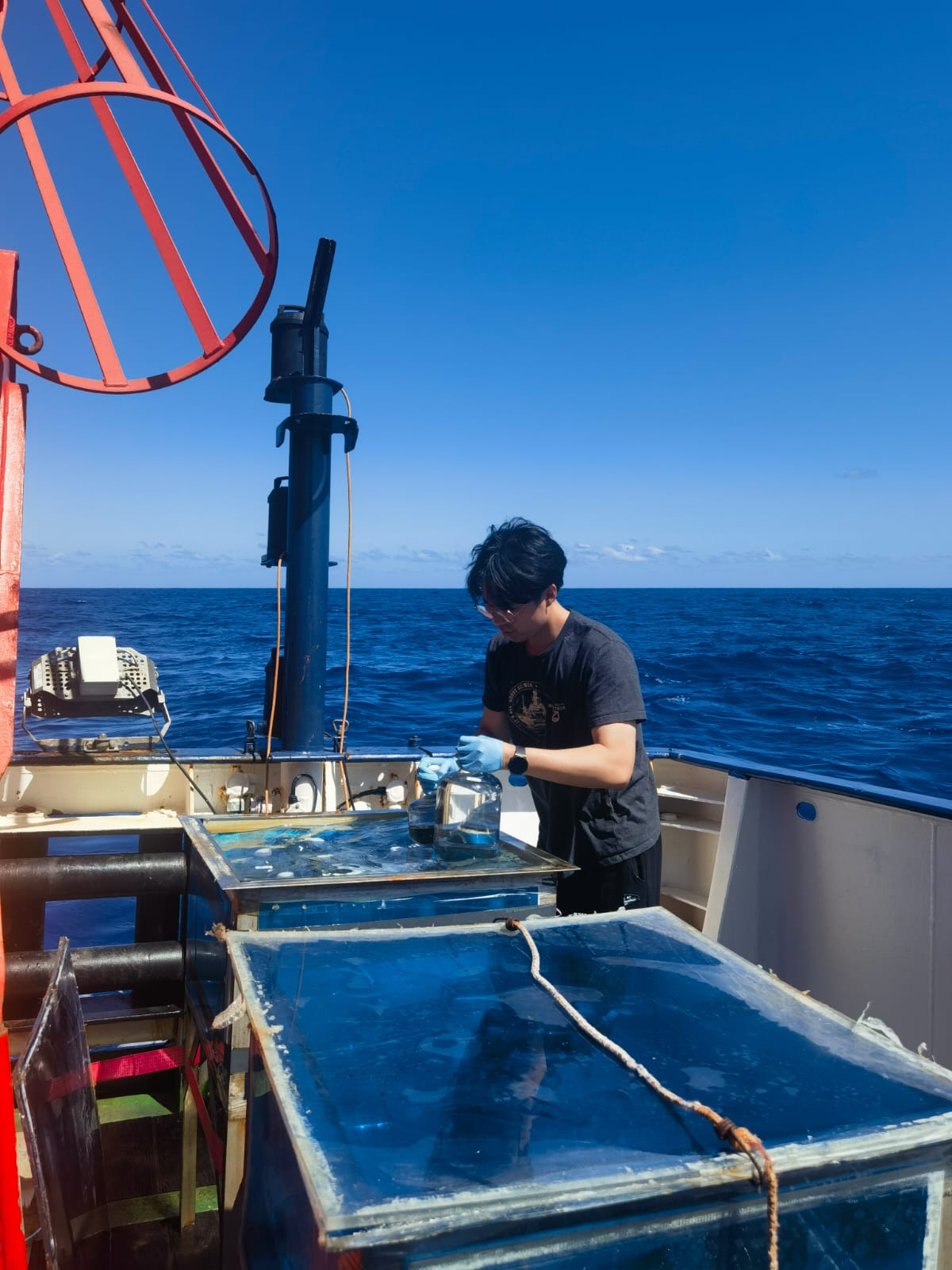Saturday 4th March 2023
The sixth and final week of research cruise M187. On 27.02 we had our last station at the most western point of our cruise transect (5 °W, 26.7 °S), in the highly oligotrophic waters of the South Atlantic subtropical gyre. These seawaters are strongly depleted in bioavailable nitrogen, which limits phytoplankton productivity. One way that sufficient bioavailable nitrogen is made available to maintain productivity is by fixation of nitrogen gas, N2, which is highly abundant in seawater but not easily accessible due to the strong triple bond that binds the two nitrogen atoms together. N2 fixation is the process whereby a special group of microbes termed diazotrophs convert N2 gas dissolved in seawater into a more biologically available form (ammonium); they can then use this nitrogen to grow, despite the available nitrate concentrations being extremely low.
One team on the cruise has been conducting regular experiments throughout the expedition to assess rates of N2 fixation: in order to do this, samples of seawater are amended a small amount of filtered seawater containing dissolved N2 gas that is highly enriched in the 15N isotope of nitrogen (in nature >99.5% of nitrogen is in the 14N form). In this way, when N2 fixation occurs it incorporates the ‘labelled’ 15N2 into the biomass of the diazotrophs. Therefore, by subsequently measuring the 15N content of the particles, the amount of N2 fixation that occurred during the incubation can be worked out. Because the rates of N2 fixation are relatively low, the incubations need to be conducted under large volume (4.5 L per rate measurement), in order that sufficient biomass can be collected to be analysed for 15N content
A key question the researchers are interested in is, what are the environmental factors that regulate rates of N2 fixation in this region? Because the process of N2 fixation requires unusually high levels of iron, which is in scarce supply in this region, we hypothesize this is a key controlling factor. In order to assess this, we have also been measuring the N2 fixation responses to artificial supply of iron.
Throughout the cruise, a number of sensors are being utilized to continuously measure physical and chemical properties of the seawater. One participant, Li Qiu, has been measuring the amount of dissolved carbon dioxide, the pH, and the alkalinity in surface seawaters. These sensors have been making measurements at very high temporal resolution. As a result, detailed maps of dissolved CO2, for example, can be generated, and have shown how CO2 varied between inside and outside the filaments. Specifically, elevated CO2 was found within the cold waters in the centre of the filaments, as these waters have recently upwelled from depth where CO2 concentrations are elevated. Working against this trend, however, is phytoplankton productivity: because the upwelled waters in the filament are elevated in nutrients, they support more phytoplankton growth, which removes dissolved CO2 from the seawater. The measured concentrations therefore represent the balance between upwelling of CO2-enriched seawaters and CO2 consumption by elevated phytoplankton productivity.

Following the final station at 5 °W in the subtropical gyre we started our return trip to Walvis Bay. This took 4.5 days and the scientists used this time to complete running experiments, finish off remaining sample analyses, pack equipment, and clean laboratories and cabins ready for the next cruise. On the 04.03 we arrived early in the morning in Walvis Bay port, Namibia. We finished packing our equipment containers that will be offloaded from the ship and return over the next weeks back to GEOMAR in Kiel. Most participants fly out directly from Windhoek airport, whilst some are staying on for some well-earned holidays in Namibia. Overall, the scientific team very happy with the outcome of the cruise, and we look forward to analysing the collected samples and data over the coming year.

We are very grateful to Captain Korte, the whole RV Meteor crew, and the DWD scientist Martin Stelzner for their excellent support over the last 6 weeks, which has been crucial for the scientific success of the research cruise M187. We also extend our thanks to the control centre for German research vessels for their continued logistical support in planning and carrying out the cruise. Finally, we thank the German Research Foundation for funding this expedition.
Best regards from Walvis Bay, Namibia,
Tom Browning
GEOMAR Helmholtz Centre for Ocean Research Kiel
